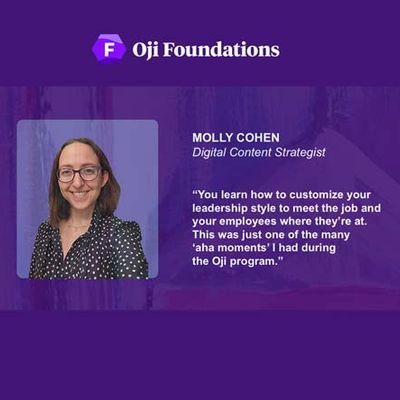5 Strategies to Help Leaders Adapt to the New World of Work

Change and complexity are par for the course for business leaders globally. Remote work and telecommuting have grown common post-pandemic. Rapid advancements in technology have also changed the way we work as well as the jobs we do.
Being a leader may never have been easy, but it’s safe to say the new world of work demands greater leadership adaptability. This article shares top strategies to help leaders adapt to the social, economic, and technological changes rewriting our views of work.
Adapting to a New Leadership Reality
Asked to come up with one word to describe the business environment over the last few years, many leaders might settle on “unpredictable.” According to Gartner analysts, leaders continue to “face historic challenges” in 2023. Amidst a “competitive talent landscape,” with an “exhausted workforce, and pressure to control costs” and a potential economic downturn looming, leaders must be flexible to succeed in today’s environment.
Workforce participation since 2005 has also declined while “US labor productivity has grown at a lackluster 1.4 percent,” according to McKinsey. Meanwhile, Deloitte’s 2023 Global Human Capital Trends Report describes this as “an era of rising agency where workers have more choice, power, and influence than ever before.”
Pair these workplace realities with the rapid evolution of workplace technology and workplace policies and you have an ongoing workforce shift that leaders must effectively manage for business success. All this at a time when employee engagement is declining (from 36% in 2020 to 34% in 2021, and 32% in 2022) and active disengagement is on the rise (18% in 2022, up from 16% in 2021, and 14% in 2020), per Gallup.
Adaptability, a key component of emotional intelligence, is required because workforce and workplace change are constant and inevitable. The key to driving better outcomes lies in your ability to help your team adapt as well. So, how can leaders help their teams adapt to new workforce realities? Applying the fundamentals of adaptive leadership can help.
5 Principles of Adaptive Leadership
Of course, cultivating better leadership across the organization doesn’t happen overnight, it requires building new skills and creating new behavioral habits over time. A focus on common elements of adaptive leadership can help you to lead effectively in a constantly changing environment.
Embrace inclusivity
Adaptive leadership recognizes the value of diverse perspectives. Being open to the breadth of knowledge and experience available within an organization makes the leader stronger and enables complex challenges to be addressed with multifaceted solutions.
Committing to equitable treatment of all team members can encourage each individual’s sense of belonging and value and ensure people feel they can bring their real identity to the workplace. This is critical to countering the growing employee disengagement in American workplaces today.
Most importantly, you can adapt your leadership style to provide the resources and support necessary to help people reach their full potential. This might be seen via one of 2023’s workplace buzzwords, “quiet hiring,” in which you focus on internal mobility and providing stretch and upskilling opportunities.
With Gartner reporting that diversity, equity, and inclusion efforts are now seeing pushback in some environments, you can demonstrate your flexibility by encouraging managers to think differently about how to be an inclusive ally and advocate in the workplace.
After all, Deloitte research found “diversity practices relate positively to employee engagement.” Additionally, the researchers identified “strong causal linkages between diversity, trust, and employee engagement.” In its Human Capital report, Deloitte posited, “the idea of diversity as a metric is dissolving in place of the notion that organizations need to be looking at DEI as outcomes instead.” Focusing on talent access, talent enablement, and talent advancement with the idea of achieving equitable outcomes in support of larger societal goals can be a focal point of adaptive leaders.
Cultivate Team Collaboration
Adaptive leaders build strong relationships with their team members, stakeholders, and other key individuals or groups. They are able to collaborate effectively and build trust. This is especially important as we move into an increasingly hyperconnected and hybrid world of work.
Leaders need to intentionally craft teams and networks that drive performance, innovation, and engagement. It’s time to rethink conventional team principles. People are on too many teams. The teams are often too large to be effective. Plus, teams are formed and dissolved at a pace that undermines relationship-building and true collaboration. These collaborative failures hinder organizational and employee performance, undercut productivity, and stifle innovation. All while eroding employee engagement and contributing to stress, overload, and burnout.
Flexible leaders can encourage collaboration and facilitate innovation by creating an environment that is conducive to experimentation and risk-taking. Your ability to navigate change and adapt and respond to changing circumstances can encourage others and lead to more successful team collaboration.
Create Space for Dialogue
Traditionally, leaders were trained to focus on a business issue, come up with the answer, and direct employees on what to do. Yet adaptable leaders aren’t stuck in rigid hierarchies, instead, they value multiple perspectives and the creativity and flexibility of brainstorming and open team dialogue. As Harvard Business Review researchers found, “Smart leaders today…engage with employees in a way that resembles an ordinary person-to-person conversation more than it does a series of commands from on high.”
Being open to and cultivating dialogue requires humility, an appreciation of power and how to exercise it, and an insatiable curiosity. In creating spaces for dialogue, leaders can foster innovation, learning, and the capacity for human flourishing - all of which leads to better decision-making and higher-performing teams.
Practice Self Awareness
The past two years have added stress and responsibility to leaders, especially around the social and emotional well-being of their teams. Yet transitions remain constant and pressures ongoing. By practicing self-awareness, you can demonstrate more emotional flexibility in the face of employee resentment and resistance to change.
Drawing on awareness of your own strengths and weaknesses can help you steer clear of burnout personally. Plus, you’ll be better equipped to hear and address employees’ concerns and emotions. With the emotional flexibility to express empathy and compassion, solve problems, and make time, you can help set up systems to help your teams help each other. Instead of taking a “let me fix it” approach, you can focus on strategizing with the team to let everyone flourish.
Build Connection
Being inclusive, supporting effective collaboration, creating space for dialogue, and practicing self-awareness all help leaders build connections by demonstrating trust and respect.
Transactional leaders might provide bonuses or promotions to team members who exceed performance expectations and may reprimand or demote those who fail to meet expectations. Yet this approach overlooks the employee value of feeling respected, valued, and acknowledged.
With employees feeling frustrated and under-appreciated at work, and anxious about the future of their jobs with the advent of automation and artificial intelligence, leaders can make a real impact by relating to employees as individuals.
Positive interpersonal relationships are at the core of our sense of self. The most successful leaders will be those who demonstrate genuine curiosity about what employees find meaningful. This can start with five words: “Tell me what you think.” There is no compensatory substitute for building positive human connection — and no action is more powerful than paying attention.
Leadership Adaptability Supports Employee-centric Culture
The recent availability of data about individual consumers moved businesses to a more customer-centric focus after years of product-centric business models. Today, though, the importance of employee-centric business practices is also getting its due.
Employees in 2023 are prioritizing purpose and looking for meaningful work. They want a “work with me” approach rather than a “work for me” environment. With employee engagement as essential to business success as customer satisfaction, leaders must quickly shift to meet the new normal of work. Adopting leadership adaptability best practices, such as those shared in this article, will help the future success of your organization, your employees, and those you serve.
Latest Posts
BACK TO HOME ❯Sign up for our People-Powered Newsletter.

 Meet our Program Experts
Meet our Program Experts
 Why Oji is Different
Why Oji is Different
 First Impressions of the Oji Foundations Program
First Impressions of the Oji Foundations Program